#Sassanian empire
Explore tagged Tumblr posts
Text


Gold coin issued during the reign of Peroz II, Sassanian Empire, circa 325-330 AD
from The LA County Museum of Art
381 notes
·
View notes
Text




Boran dokht [590 - 632 A.D]
Boran dokht was the first empress of the sassanid (persia) empire. She was the daughter of king khosrow II and byzantine princess Maria.
Although her two tenures of rule were shortlived, she did try to bring stability to persia by the implementation of just laws, reconstruction of the infrastructure, and by lowering taxes and minting coins. Diplomatically, she desired good relations with her western neighbours (the byzantinnes) , whom she had an embassy sent to, which was well received by emperor heraclius
A/n: idk why but it kinda reminds me of sibylla's ceremonial crown >_<...
Art by me
Coin source: sekeha . Com
#sassanid empire#digital artist#artwork#artists on tumblr#ancient#ancient history#ancient persia#boran dokht#kingdom of heaven#fandom#fanart#history#empress#baldwin iv#sibylla of jerusalem#art#sassanian empire#women in history
70 notes
·
View notes
Text

Look at this beautiful ossuary.
#history#ancient history#zoroastrianism#ancient iran#ancient persia#sasanian empire#sassanian empire#zoroastrian priests#sogdian#fire temple
48 notes
·
View notes
Text

#statue#camel#elephant#carving#Sassanian empire#Dunhuang#Kelsey Museum of Archaeology#Ann Arbor#Michigan
3 notes
·
View notes
Text
The Battle of Dara: A Turning Point in Byzantine-Persian Warfare
Background: The Stage Set for Conflict The Byzantine Empire, with its capital at Constantinople, was the successor to the Eastern Roman Empire, preserving much of Roman law, culture, and administrative structures. Under the reign of Emperor Justinian I, who ascended the throne in 527, the empire embarked on an ambitious program to restore the glory of Rome. Justinian’s vision extended beyond…
0 notes
Text

#antioch#khosrows better antioch#persians#sassanians#sassanian empire#ancient rome#roman empire#eastern roman empire#byzantium#byzantine empire is the false name its just roman
1 note
·
View note
Text
Next is Empress Boran, one of the few people who actually was a reigning empress in the long annals of Iranian history:
Next up is the Sassanian Empress Boran, whose life overlaps with the great and ruinous war between the Iranian and Byzantine Empires that would do so much to make the rise of Islam possible. She played a part in the intrigues that surrounded the immediate aftermath of the war and the overthrow of Khusrau II, and is one of the figures given credit for the return of the relic of the True Cross to Byzantium after Heraclius won the one war, only to find himself playing a starring role in the loss of another.
https://www.iranicaonline.org/articles/boran-pers
#lightdancer comments on history#women's history month#medieval history#iranian history#sassanian empire#boran
0 notes
Text
Description: of shallow form with straight walls which step down to a low foot, decorated with coloured slips with the figure of a man on horseback , wearing high boots and an elaborate headdress, against a background of hatched panels
Catalogue Note: The equestrian figure depicted on this unusual dish can be related to the standard Sassanian iconographic type of the hunter-rider, of which numerous examples survive in precious metal. Richard Ettinghausen was the first to make this connection, arguing that the cavaliers and huntsmen on Samanid buffware mark the vestiges of Sassanian royal iconography in which the royal personage projects his power through the symbol of the hunt. The composition on this dish might lack the grandeur of Sassanian and post-Sassanian silver dishes - there is no bloodletting or dynamic movement - but, nonetheless, something of the hieratic, imperial quality of the prototype is retained: the mounted individual has the bearing and trappings of a person of status and power. Teresa Fitzherbert added to the debate by arguing that these compositions need to be interpreted in the context of local festivals, customs and traditions, such as that of the futuwwa, a group of select young men, usually celibate, who followed a strict code of chivalry and engaged in prescribed practices and initiation rites - for instance, they were known to have worn trousers, and Parthian-style boots like the rider depicted here (see Fitzherbert, T., unpublished MA dissertation in the Bodleian Library, Oxford). These figural motifs and others that appear on tenth-century buffware such as floral and geometric patterns have been unflatteringly labelled as reminiscent of "peasant or folk" art due to their boisterous polychrome designs which contrast so strongly to other ceramic wares from the area with their controlled colouration and empty spaces. The buffwares use a technique that saw green or yellow pigments applied directly to the clay body (sometimes a slip ground is used) over which a thin glaze was poured. Although Nishapur produced a large number of buffware pieces, other centres of production such as Merv and Afrasiyab used the same techniques (Kuwait 2004, p.247-251). Another much smaller bowl with a similar equestrian theme, excavated at Nishapur is in the Metropolitan Museum of Art (see Wilkinson 1973, no.62a, p.45). Sotheby's

A Large Nishapur Figural Bowl, Central Asia,
10th Century
22 notes
·
View notes
Photo

Ancient Persian culture exerted a powerful influence throughout the Near East, and beyond, for over a thousand years between c. 550 BCE - 651 CE and many aspects of their culture continued to influence others afterwards and up through the present day. The first Persian polity was the Achaemenid Empire (c. 550-330 BCE) which fell to Alexander the Great and, after his death, the region was held by the Hellenic Seleucid Empire (312-63 BCE) founded by one of Alexander's generals Seleucus I Nicator (r. 305-281 BCE). Persian culture continued under the Seleucids, however, and again became dominant with the rise of the Parthian Empire (247 BCE-224 CE) and continued, at its greatest height, throughout the Sassanian Empire (224-651 CE) until the Persians were conquered by the invading Muslim Arabs. From the earliest days of the Achaemenid Empire till the last of the Sassanians, the Persians introduced a number of novel concepts in innovations and inventions which are often taken for granted today or whose origins are largely unknown. Literary motifs, the custom of daily teatime, care for dogs, refrigeration and air conditioning, and many other established aspects of daily modern life originated or were developed by the ancient Persians. The Persians held to an oral tradition of transmitting information, however, and so much of their history, until the Sassanian period, comes from others. A large part of whatever written records of the Achaemenids did exist was destroyed by Alexander when he burned the capital city of Persepolis in 330 BCE and the Parthians retained the oral tradition of their precursors and so much of Persian history was preserved by the Greeks and, later, the Romans. These writers did not always represent Persian culture accurately but provide enough information, coupled with archaeological evidence and what Persian sources remain, to recognize the power and vision of the culture and its enduring legacy. Below are ten contributions and historical facts relating to the Persians which are often overlooked or largely unknown. These are only a notable few, however, and do not begin to address the vast scope of Persian achievement.
175 notes
·
View notes
Text
It would be great if I put as much dedication, time and attention that I do into ancient history into something academically useful to me right now.
#host —★#ancient history#ancient iran#sassanian empire#achaemenid#ancient rome#roman empire#zoroastrianism#mithraism#manichaeism
7 notes
·
View notes
Text
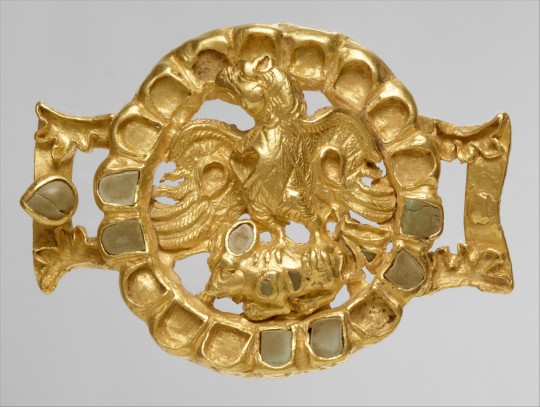
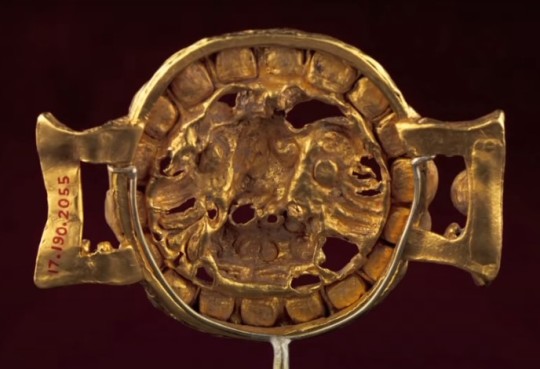
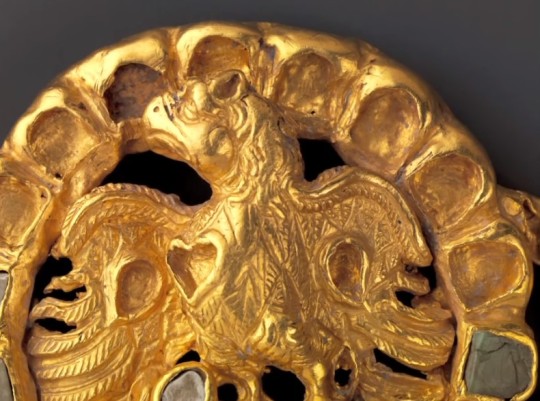
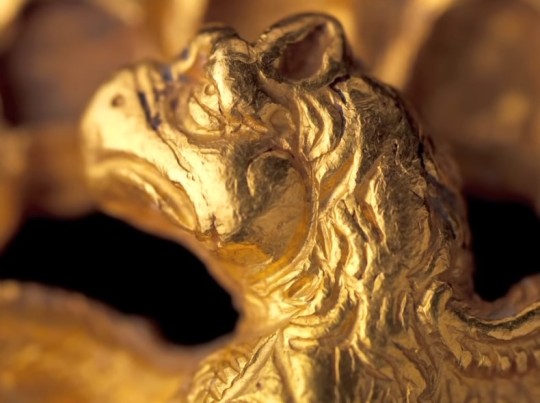
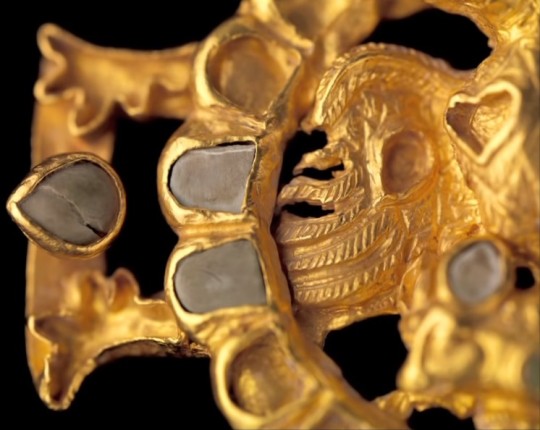

Gold clasp of eagle, possibly belonging to the House of Karen, 1st-2nd C. CE. Found in Nahavand. The House of Karen seems to have been descended from the Parni, who were themselves an offshoot of the Scythians. Ernst Herzfeld wrote that this item probably belonged to their house.
"House of Karen (Middle Persian: Kārēn; Parthian: 𐭊𐭓𐭍𐭉, romanized: Kārēn; Persian: کارن, romanized: Kārin or Kāren), also known as Karen-Pahlav (Kārēn-Pahlaw) was one of the Seven Great Houses of Iran during the rule of Parthian and Sassanian Empires. The seat of the dynasty was at Nahavand, about 65 km south of Ecbatana (present-day Hamadan, Iran). Members of House of Karen were of notable rank in the administrative structure of the Sassanian empire in multiple periods of its four century-long history.
The Karens, Karan-Vands, Qarinvand dynasty or Karen-Pahlevi as they are also called, claimed descent from Karen, a figure of folklore and son of the equally mythical Kaveh the Blacksmith. Their historical origin however may be that the Karens, along with the House of Mihran, were descended from the Arsacids. According to Movses Khorenatsi, this descent was via one of the three sons of Phraates IV, also named Karen. The fact that Karen may also have been among the family names of the Arsacid dynasty may give credence to this theory.
The first verified reference to the Karenas was during the Arsacid era, specifically as one of the feudal houses affiliated with the Parthian court. In this they were similar to the House of Suren, the only other attested feudal house of the Parthian period. Following the conquest of the Parthians, the Karenas allied themselves with the Sassanids, at whose court they were identified as one of the so-called "Parthian clans". The Armenian Kamsarakan family was a branch of the House of Karen."
-taken from Wikipedia
youtube
#scythian#iranian#ancient persia#ancient history#history#art#antiquities#museums#archaeology#heart symbol#Youtube
208 notes
·
View notes
Text
(via Gridllr)


Bronze bust of King Sapur II, Sassanian Empire (Iran), 4th century AD
from Phoenix Ancient Art
#history#antiquities#art#ancient art#persia#iranian history#iran#Bronze bust#King Sapur II#Sassanian Empire#Iran#4th century AD#Phoenix Ancient Art
1K notes
·
View notes
Text
The Rise and Fall of the Fantasy Roman Empire (part one(?)
I have said in many other posts that the popular fantasy genre, especially in TTRPG settings (official or homebrew) is almost married to the European Middle Ages aesthetics while in fact often presenting a more "early modern" society, with the results of intercontinental trade, widespread printing, growing literacy and urbanization, etc. This isn't limited to the fantasy genre though. In space opera science fiction, though not as common nowadays, the idea of a Galactic Empire (or a Galactic Republic that turns into an Empire), in some way or another, was considered a staple of the genre. Why is that? (long post incoming)
Perhaps the most notorious thing to note here are the parallels to the rise and fall of the Roman Empire, as in, straight up retellings of it sometimes (Isaac Asimov's Foundation). The Roman Empire is considered in many ways to be The Empire, its influence on Western culture cannot be overstated and people project their own fears and anxieties when analyizing its rise, decline and fall, which is perhaps one of the most complex areas of historiography for these reasons.
And I'm going to take a stab at this incredibly complex topic and its influence on fiction, so this will be inevitably simplified, but as you might be aware, the Roman Empire really didn't fall just like that. Of course, the Byzantine Empire survived in the East, and if you're one of those annoying Paradox Interactive Byzantine fans you know they called themselves "Romans" right to the very end all the way in 1453 CE (for reference, the last Western Roman Emperor was deposed in 476 CE, almost a thousand years before). And also, the theory of the "barbarian invasions" is overstated, while there was certainly conflict and violence, it wasn't that the last legionaries fell to hordes of barbarians. In fact, many of those barbarians WERE Romans themselves, fought for the Roman empire as allies, and after they built their own kingdoms they kept using Roman titles and administration. On the other hand, you can see a decline on quality of life, literacy, trade, public works, administration, in many places, that would not be surmounted until late in the Middle Ages.
So, some say the Roman Empire never truly fell, other say that it was just replaced by feudal goverments as it declined, and yet others say that there really was a sharp catastrophic decline that justifies the idea of a "dark ages". So, what really happened?
Well, again, to oversimplify the most debated topic ever in historiography, the Roman Empire was big, and when it fell, different places took it differently. As I've said, the Byzantine Empire survived with a highly modified society but still "Roman" in a sense, for centuries, with a centralized state and army, though it also hit hard by wars with the Persian Sassanian Empire and later Islamic empires and it turned more and more to feudalism as time went on. However, the big urban centers, goverment bureaucracy, literate society (for the time), trade centers in the Middle East... might have declined, but never dissapeared. In fact, when the Islamic caliphates conquered the region, their rule (again, to oversimplify) was a version of Roman administration, and it was the abundance of classical literature and literacy found in the region that impulsed the Islamic Golden Age.
Meanwhile... Western Europe didn't do so great. I won't stay to analyze the entire reasons for it, but the Roman administration was replaced first by ad-hoc kingdoms and then a complex feudal system which you might be familiar with, where noble families and aristocrats ruled their own pieces of land and titles, swearing fealty to a king, much unlike the more state-based Roman bureaucracy (you could even go to an extreme and say there was no state per se, just alliances and fealty among aristocratic families). There was a sharp decline of literacy outside of the church, there was not an state that could guarantee the public works and vibrant Roman economy, and wars and plagues were devastating (sometimes against the "Roman Empire" itself, like in Justinian's attempts at reconquering the West). In places such as France and Italy, you could really talk about a huge decline.
The place that probably took it the worst, however, was Britain. Roman Britain was part of the Roman Empire, connected to its trade routes, economy, and cultural dynamics. The separation was devastating (at least to the Romanized Britons, perhaps it was good for other peoples in the island). Anything resembling central authority in Britain just ceased to be, replaced by warlords. Cities were abandoned. There was no trade with the rest of the world. Literacy declined so much that little is known about the period. Post-Roman Britain is the closest thing to a true "Dark Ages", in fact, it might be the prototypical dark ages for the English-speaking world.
And this is where I was getting at. The decline of the Roman Empire left a strong impression in all of Europe (hence the Rennaisance, praised at the time as the return of classical culture, but that's another overly complex historiographic topic). But it was in Britain that it left the most strong impression of a true Dark Ages. This was reflected in one of the English-speaking world's most prominent works, Decline and Fall of the Roman Empire by Edward Gibbon. So prominent that it inspired Isaac Asimov's Foundation trilogy almost beat by beat (someone joked, I don't remember where, that because of the number of Galactic Empires in science fiction, Gibbon is the most influential sci-fi writer)
And you can guess where this is going with fantasy. While I can't say Tolkien, the grandfather of modern popular fantasy (the father is Gary Gygax) copied Gibbon 1:1, you can feel the same conception of the British Dark Ages sweeping through his work. Ancient ruins of the glorious past in what could be termed, a bit tongue-in-cheek, as post-apocalyptic fantasy. Lord of the Rings reads sometimes like something set in the Early Middle Ages, the so called "Dark Ages", not so much elaborate plate armor and vibrant cities, but rather chainmail armor and abandoned ruins (like the romantic conception of the Fall of Rome, I haven't even touched on romanticism here...). This is of course not a coincidence. Tolkien's favorite inspirations (Beowulf, Norse myth) were from the Early Middle Ages.
And since this scenario was already popular in the English-speaking world, and RPGs such as Dungeons and Dragons (again, the father of popular fantasy) were based on Tolkien, you can see how this shaped our conception of not only the real-life Middle Ages, but also the fantasy genre in... general. You know the "Points of Light" "setting" for D&D 4e? Read all I've told you, and think about it. Really think about it.
As an addenum, I'm from Latin America of course, and unfortunately, our own fantasy and science fiction was never as popular as the English ones. However, there is something interesting to consider here. The Roman Empire in Iberia "fell" to the Visigoths, which tried to keep a kind of Roman administration, as successors to them. The Visigoths were in turn replaced by Al-Andalus, one of the most unique cultures of all times. It was the struggle between the Christian and Muslim kingdoms (the so-called Reconquista, a simplified and supremacist narrative that forgets about all the cultural interaction that existed for centuries) and then the conquest (or rather plunder) of America which left the most striking markd in Spanish and Portuguese classical (pre-XIX century) literature. What marks did those events leave in our fiction here in Latin America? Which on its own has become its own thing beyond Iberia...
If you want to read more about the *fall* of the Roman Empire, I cannot recommend enough this three part series from the blog ACOUP (I'll leave you to figure the acronym) which I took much information for what I said in this post from, and goes into much more depth which I could ever hope to: 1, 2, 3.
For my part, I actually intend this to be an introduction to a topic I've been wanting to talk since forever (a few days ago): Space Empires. Galactic Empires and Republics. You might think they are a dead trope, you might think "'well, they're more of fantasy than realistic science fiction", but I'm not exactly to prove that Star Wars is unrealistic, but rather to talk about the worldbuilding and narrative choices (and yes, perhaps more than a bit bit of economics, politics and logistics as well) of space empires, and what are some other options you could consider if you're building a space setting.
If you liked this post, and would like to read more like above, please, feel free to follow, and also consider donating to my ko-fi, as I intend to write more in the future:
#cosas mias#worldbuilding#writing#fantasy#history#science fiction#roman empire#long post#biotipo worldbuilding
106 notes
·
View notes
Text
11 Menachem Av 5784 (14-15 August 2024)
When the Babylonian army first besieged Jerusalem and took captives away to live in exile, the prophet Yirmeyahu sent them a message:
So says HaShem, ruler of the heavenly host, the G-d of Israel, to all the captives, who HaShem has caused to be carried away captive from Jerusalem to Babylon: Build houses, and dwell in them, and plant gardens, and eat their fruits; marry there, and bear children; and find wives for your sons, and husbands for your daughters, that they may bear sons and daughters; and multiply there, do not waste away. And seek the peace of the city where G-d has sent you as exiles, and pray to HaShem for it; for in the peace of the city shall ye have peace.
The exiles appear to have taken this message to heart. A generation later, when the Persians seized control of Babylon and permitted displaced peoples within the empire to return to their ancestral homelands, many Jews stayed in the Babylonian heartland, tending their gardens, raising their children and grandchildren, and praying for the peace of their cities. Five hundred years later, after another Mikdash had been built and destroyed, the Jews of Babylon were still there, living under yet another Persian empire. They too established rabbinical academies like the one Yochanan ben Zakkai founded at Yavneh. And when the Gemara was compiled it was collected semi independently by both the Galilean and Babylonian sages, with the Talmud Bavli being the more complete and detailed of the two collections. Through centuries of turmoil, and then millennia, the Jewish community of the Mesopotamian river valley remained strong and vibrant. And through it all, the Jews often saw their own welfare as wrapped up in that of their gentile neighbors and sought the peace of their cities.
One such occasion came on the 11th of Av 5493. The Sassanian empire of Tannaitic times had given way to the Islamic caliphates, and the caliphate in its own turn had been absorbed by the Ottoman Empire. The Jews of Sura were now the Jews of Baghdad, and Baghdad was under siege by a Persian army led by Nader Shah Afshar. The Safavid Persians were a theocratic regime which had imposed restrictions on Jewish life similar to those of medieval Western Europe— Jews were forced to live in segregated neighborhoods, wear badges marking them as different, and forbidden from entering most trades and professions. The Jews of the Ottoman Empire by contrast had a large amount of official toleration. And of course the capture of Baghdad by the Shiite Safavids would also bring hardships on the majority Sunni Muslim population of the city.
On the 11th of Av 5493, an Ottoman army led by the 70 year old general and recently retired Grand Vizier Topal Osman broke the Safavid siege and drove off the Persian invasion. Baghdad’s Jewish community rejoiced in the deliverance of the city, and observed 11 Menachem Av as a special commemoration of the deliverance of Baghdad for generations. It has only been since the Second World War and the rise of Arab and Islamic nationalism that the Jews of Babylon once more faced a major persecution. Most of Baghdad’s Jewish population made aliyah under pressure from antisemitic groups which accused them of double loyalties with the newly established Israeli state.
#hebrew calendar#jewish calendar#judaism#jewish#jumblr#Tanakh#Sefer Yirmeyahu#babylonian exile#Babylonian Jews#2500 years in Babylon#diaspora judaism#Jewish diversity#Mesopotamian Jews#Jewish history#deliverance#Menachem Av#11 Menachem Av#🌔
25 notes
·
View notes

